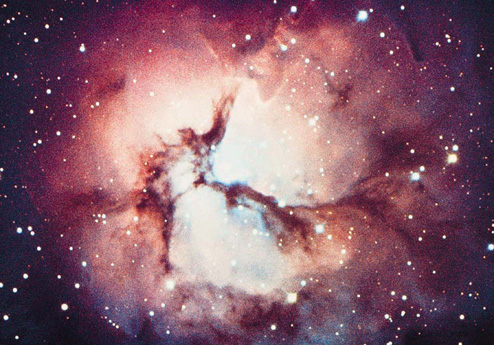Astronomers Discover Method to Detect Nanodiamonds in Outer Space
February 27, 08
 |
According to PhysOrg.com, a science and technology news site, astronomers believe that these tiny diamonds could provide clues as to how molecules rich in carbon, the basis of life on Earth, form and develop in space.
After studies of meteorites in the 1980s revealed numerous tiny diamonds inside, astronomers discovered that three percent of all carbon in meteorites was made up of nanodiamonds. While pondering this, they determined that if meteorites are an indication of the dust content in space, one gram of dust and gas in a cosmic cloud could contain as many as 10,000 trillion nanodiamonds.
“The question that we always get asked is, if nanodiamonds are abundant in space, why haven’t we seen them more often?” says Charles Bauschlicher of
Bauschlicher and his team of researchers simulated the conditions of the interstellar medium – the space between stars – with computer software, in an attempt to solve this. In short, they found the nanodiamonds by detecting the infrared light given off by the nanodiamonds when their molecules were hit with light from a nearby star.
Research is continuing, and a next step may be to figure out how diamonds form in the outer space environment. “Space diamonds are formed under very different conditions than diamonds are formed on Earth,” commented Louis Allamandola, also of
Allamandola notes that, while diamonds on Earth are formed under high pressure and very high temperatures, diamonds in space are found in cold molecular clouds, where pressures are considerably lower and temperatures below minus 240 degrees Celsius (minus 400 Fahrenheit).